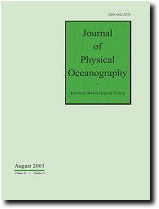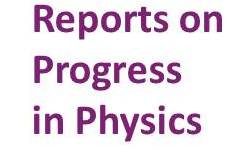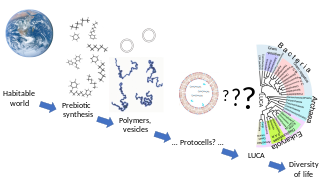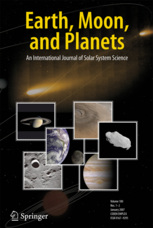
Astrobiology, is a scientific field within the life and environmental sciences that studies the origins, early evolution, distribution, and future of life in the universe by investigating its deterministic conditions and contingent events. As a discipline, astrobiology is founded on the premise that life may exist beyond Earth.

Hypothetical types of biochemistry are forms of biochemistry agreed to be scientifically viable but not proven to exist at this time. The kinds of living organisms currently known on Earth all use carbon compounds for basic structural and metabolic functions, water as a solvent, and DNA or RNA to define and control their form. If life exists on other planets or moons it may be chemically similar, though it is also possible that there are organisms with quite different chemistries – for instance, involving other classes of carbon compounds, compounds of another element, or another solvent in place of water.

Life is a quality that distinguishes matter that has biological processes, such as signaling and self-sustaining processes, from matter that does not. It is defined descriptively by the capacity for homeostasis, organisation, metabolism, growth, adaptation, response to stimuli, and reproduction. All life over time eventually reaches a state of death, and none is immortal. Many philosophical definitions of living systems have been proposed, such as self-organizing systems. Viruses in particular make definition difficult as they replicate only in host cells. Life exists all over the Earth in air, water, and soil, with many ecosystems forming the biosphere. Some of these are harsh environments occupied only by extremophiles.

Monthly Notices of the Royal Astronomical Society (MNRAS) is a peer-reviewed scientific journal in astronomy, astrophysics and related fields. It publishes original research in two formats: papers and letters. MNRAS publishes more articles per year than any other astronomy journal.
The NASA Astrobiology Institute (NAI) was established in 1998 by the National Aeronautics and Space Administration (NASA) "to develop the field of astrobiology and provide a scientific framework for flight missions." In December 2019 the institute's activities were suspended.

The Journal of Physical Oceanography is a peer-reviewed scientific journal published by the American Meteorological Society. It was established in January 1971 and is available on the web since 1996. Online articles older than one year are available as open access. The editor-in-chief is Jerome Smith.

Atmospheric Chemistry and Physics is an open access peer-reviewed scientific journal published by the European Geosciences Union. It covers research on the Earth's atmosphere and the underlying chemical and physical processes, including the altitude range from the land and ocean surface up to the turbopause, including the troposphere, stratosphere, and mesosphere. The main subject areas comprise atmospheric modelling, field measurements, remote sensing, and laboratory studies of gases, aerosols, clouds and precipitation, isotopes, radiation, dynamics, and biosphere and hydrosphere interactions. Article types published are research and review articles, technical notes, and commentaries.

Reports on Progress in Physics is a highly selective, peer reviewed journal published by IOP Publishing.

The International Journal of Astrobiology (IJA) is a peer-reviewed scientific journal established in 2002 and published by Cambridge University Press that covers research on the prebiotic chemistry, origin, evolution, distribution, and future of life on Earth and beyond, SETI, societal and educational aspects of astrobiology. It also contains papers in astronomy, space science, planetary science, and biology that have a strong connection to astrobiology. Occasional issues are dedicated to research papers from international astrobiology meetings. The editor-in-chief is Rocco Mancinelli (NASA). According to the Journal Citation Reports, the journal has a 2019 impact factor of 2.026.

Astrobiology is a peer-reviewed scientific journal covering research on the origin, evolution, distribution and future of life across the universe. The journal's scope includes astrobiology, astrophysics, astropaleontology, bioastronomy, cosmochemistry, ecogenomics, exobiology, extremophiles, geomicrobiology, gravitational biology, life detection technology, meteoritics, origins of life, planetary geoscience, planetary protection, prebiotic chemistry, space exploration technology and terraforming.
The International Journal of Environmental Research and Public Health is a peer-reviewed open access scientific journal that was established in 2004 and is published by MDPI. The editor-in-chief is Paul B. Tchounwou. The journal covers all aspects of environmental health sciences and public health.

Abiogenesis is the natural process by which life arises from non-living matter, such as simple organic compounds. The prevailing scientific hypothesis is that the transition from non-living to living entities on Earth was not a single event, but a process of increasing complexity involving the formation of a habitable planet, the prebiotic synthesis of organic molecules, molecular self-replication, self-assembly, autocatalysis, and the emergence of cell membranes. The transition from non-life to life has never been observed experimentally, but many proposals have been made for different stages of the process.

The Bulletin of Volcanology is a peer reviewed scientific journal that is published ten times per year by Springer Science+Business Media. It is the official journal of the International Association of Volcanology and Chemistry of the Earth's Interior (IAVCEI). The focus of the journal is volcanoes, volcanic products, eruptive behavior, and volcanic hazards. The Executive Editor is Marie Edmonds.

Geochimica et Cosmochimica Acta is a biweekly peer-reviewed scientific journal published by Elsevier. It was established in 1950 and is sponsored by the Geochemical Society and the Meteoritical Society. The editor-in-chief is Jeffrey Catalano. The journal covers topics in Earth geochemistry, planetary geochemistry, cosmochemistry and meteoritics.

Earth, Moon, and Planets is a peer-reviewed scientific journal, published approximately ten times per year by Springer Science+Business Media. It was established in 1969 under the title The Moon, was known as The Moon and the Planets from 1978 to 1983, and was first published under the current title in February 1984. The editor-in-chief is Jamie D. Gilmour. The journal's main focus is on research about the Solar System. Besides original research articles, Earth, Moon, and Planets publishes conference proceedings, review articles, book reviews, and special issues.
Life is a peer-reviewed open access scientific journal published by MDPI. The journal was established in 2011 and covers all aspects of life sciences, from basic to applied research. It publishes reviews, research articles, short communications, perspectives, and hypotheses.
Open Physics is a peer-reviewed open access scientific journal covering all aspects of physics. It is published by De Gruyter and the editor-in-chief is Sally Seidel. Occasionally, the journal publishes special issues on a specific topic.

Hydrology and Earth System Sciences is a monthly peer-reviewed open access scientific journal that covers research in hydrology and related fields like water resource management. The journal is published by Copernicus Publications on behalf of the European Geosciences Union. It was established in 1997 and the editors-in-chief are Theresa Blume and Alberto Guadagnini.
Sara Imari Walker is an American theoretical physicist and astrobiologist with research interests in the origins of life, astrobiology, physics of life, emergence, complex and dynamical systems, and artificial life. Walker is deputy director of the Beyond Center for Fundamental Concepts in Science at Arizona State University (ASU), associate director of the ASU-SFI Center for Biosocial Complex Systems and an associate professor at ASU. She is a co-founder of the astrobiology social network SAGANet, and on the board of directors for Blue Marble Space, a nonprofit education and science organization. As a science communicator, she is a frequent guest on podcasts and series, such as Through the Wormhole with Morgan Freeman.
Annales Geophysicae is an open-access peer-reviewed scientific journal publishing research within Earth science. It is published by Copernicus Publications on a bimonthly basis.













